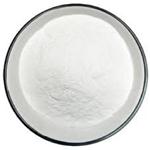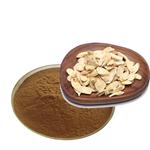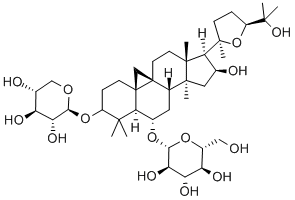Effect of astragaloside IV on kidney injury in mice
Sep 11,2019
Astragaloside IV is a bioactive saponin first isolated from the dried plant roots of the genus Astragalus, which is used in traditional Chinese medicine. It dose-dependently inhibits human adenovirus type 3 (HAdV-3) in A549 cells (IC50 = 23 µM; LC50 = 865 µM). It inhibits replication of HAdV-3 and decreases HAdV-3-induced apoptosis. It has diverse protective effects for the cardiovascular, immune, digestive, and nervous systems. In particular, it reduces myocardial infarct size in dogs when administered prior to coronary ligation and reduces reperfusion arrhythmias in isolated rat hearts.

Background
Astragalus membranaceus, a traditional Chinese medicine (TCM), has been widely used in the treatment of chronic kidney disease (CKD) in China. Astragaloside IV is one of the major compounds of Astragalus membranaceus. Recent research has shown that astragaloside IV demonstrates pharmacological effects, such as anti-inflammatory, anti-fibrotic and anti-oxidative stress activities. Our aim was to investigate the effects of astragaloside IV on indoxyl sulfate (IS)-induced kidney injury in vivo, and to study the underlying mechanism.
Methods
Forty C57BL/6 mice with ½ nephrectomy were divided into four groups: control group (n = 10), IS group (n = 10), IS plus 10 mg/kg of astragaloside IV group (n = 10) and IS plus 20 mg/kg of astragaloside IV group (n = 10). IS intraperitoneal injection and astragaloside IV treatment were administered continuously for 1 month. Next, the blood urea nitrogen (BUN) level, serum IS level, tubulointerstitial injury, renal oxidative stress and inflammatory injury were assessed.
Results
The IS intraperitoneal injection mouse group showed increasing levels of serum IS, BUN, tubulointerstitial injury, renal oxidative stress and inflammatory injury. Astragaloside IV treatment couldn’t reduce the serum IS level or renal nuclear factor-κB and interleukin-1β levels. However, 20 mg/kg astragaloside IV treatment reduced the BUN level and significantly attenuated IS-induced tubulointerstitial injury. Renal oxidative stress was decreased by the administration of astragaloside IV.
Conclusions
These results suggest that astragaloside IV prevents IS-induced tubulointerstitial injury by ameliorating oxidative stress and may be a promising agent for the treatment of uremia toxin-induced injury.
- Related articles
- Related Qustion
- The mechanism of action and storage method of Astragaloside IV Mar 22, 2024
Astragaloside IV has aroused interest in the scientific community due to its broad potential health benefits.
- Astragaloside IV: mechanism of action, pharmacokinetics and toxicity Sep 27, 2023
Astragaloside IV in radix astragalus protects against heart failure by improving cardiac function and regulating calcium balance. It has limited absorption and low toxicity.
Carbon tetrachloride, also known as tetrachloromethane, has its molecule formula being CCl4. It appears as colorless liquid with the melting point of-23 ° C, boiling point of 76.8 ° C and the relative density of 1.5867. It can dissolve grea....
Sep 11,2019Organic ChemistryChromium trioxide is not combustible but is a strong oxidizing agent and can accelerate the burning rate of combustible materials. Contact with easily oxidized organic or other combustible materials (including paper and oil) may result in i....
Sep 11,2019APIAstragaloside IV
84687-43-4You may like
Astragaloside IV manufacturers
- Astragaloside IV
-

- $3100.00 / 1Kilograms
- 2024-07-05
- CAS:84687-43-4
- Min. Order: 1Kilograms
- Purity: 98%
- Supply Ability: 100tons
- Astragaloside IV
-

- $15.00 / 1KG
- 2024-07-05
- CAS:84687-43-4
- Min. Order: 10g
- Purity: 0.3-99%
- Supply Ability: 1000KG
- Astragalus Root Extract
-

- $0.00 / 1kg
- 2024-06-12
- CAS:84687-43-4
- Min. Order: 1kg
- Purity: 30-70%
- Supply Ability: 1000kg




